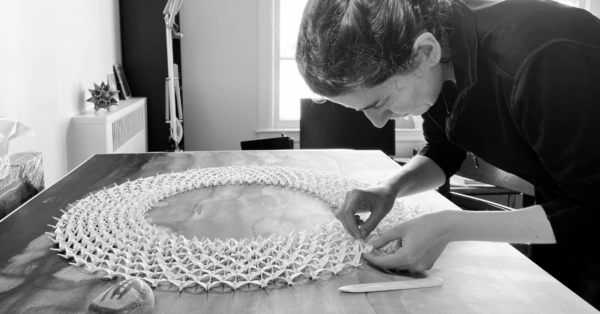From SFZC member Dot Kostriken
Dr. Dorothy Kostriken, a longtime member of San Francisco Zen Center, shares some memories about some of the earliest days at Tassajara in 1967, practicing with Suzuki Roshi, and how these days, at age 81, she is relating to Zen practice and to SFZC. The first practice period at Tassajara was held in 1967, and tangaryo would take place more often than it does now, for anyone interested in joining the students for any extended time. Tangaryo, a kind of traditional sitting initiation at a monastery, would last from one to three days at Tassajara during that time.
 Finding Tassajara
Finding Tassajara
Desperately unhappy, feeling trapped and with my soul disintegrating, I came to Tassajara and to Buddhism with “my head on fire.” An older woman in a group therapy class at Monterey Peninsula College had told me about what sounded like adult summer camp. Having not been away from my husband or my three children since they were born, it was with fear and trepidation that I drove my rented car down that dirt road, burning out the automatic brakes.
So, I started out ready for better and different, not having a clue, really, about Buddhism except what I’d heard from my body movement teacher, Helen Morgenrath, when she shared about her meditation practice.
At Tassajara, I began sitting on a regular basis with the students and eventually sat tangaryo, which felt like boot camp, and was one of the hardest things I’d ever done. I remember leaving the zendo and telling Peter Schneider that I had to go. That I couldn’t do it. He said gently and firmly: “Yes, you can. Go back in.” And I did.
Suzuki Roshi
I observed Roshi from the bridge, directing Phil Wilson, who was moving rocks: here—then there—then here again. Ox herding in real life!
I was in awe of Suzuki Roshi, and didn’t talk to him until our first dokusan. The questions I wanted to ask were about a painful decision—whether or not to divorce. I tried to hold back tears (I didn’t want to waste his time, crying). As we sat together, I understood that my question held my answer and that he could not answer for me. After a few minutes, he stood up and circumambulated me. He sat down again and said, “Your posture is very good.”
In that moment, the question formulated: “If I make a difficult decision, and it is wrong, will sitting help me?” He said, “Yes. Right or wrong, it will help.”
My three children came back to Tassajara with me for a time. They liked Roshi because he was the only adult they were taller than, and he hid candies in his sleeves to sneak to them.
These Days
My zazen practice is what guides my private psychotherapy practice and my desire to serve others, to be in authentic relationship. On occasion, my clients begin to practice meditation after we have shared a few sessions. It works for some, and not for others. Staying connected to San Francisco Zen Center and my SFZC membership keeps me in touch with a changing Western Buddhism: dynamic and sometimes unsettling.
__________
San Francisco Zen Center is less than 60 years old. Supported by community and grounded in practice, SFZC has—in that short time—trained thousands of Zen students. And every year, thousands of people visit us from all over the world to seek refuge at our temples and to study the Dharma.
Sustaining membership supports San Francisco Zen Center to maintain our temples and steward the land of Green Gulch and Tassajara so that we may stay open to the public and continue serving our communities. Membership enables us to offer a wealth of dharma to our global sangha via our website, and to continue to train priests and lay practitioners who go on to start new practice centers throughout the world.
Please support our work. Become a sustaining member today: join.sfzc.org

Group of students at Tassajara in the fall 1967, with Suzuki Roshi (center) and Kobun Chino Roshi (behind). If you were there too, can you spot Dot? (Photo by Minoru Aoki.)











